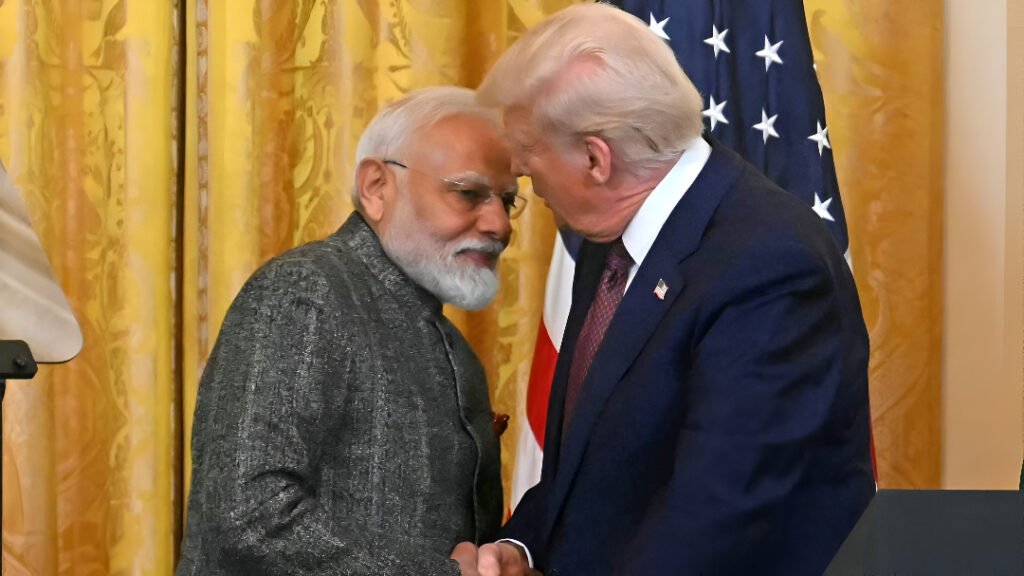
President Donald Trump’s administration asked the U.S. Supreme Court on Sept. 3–4, 2025, to quickly review a federal appeals court ruling that struck down his sweeping import tariffs—and in its filings explicitly linked tariffs on India to U.S. efforts to pressure Russia and help end the war in Ukraine.
The core claim in the court papers is tariffs tied to Ukraine peace.
What the government told the Supreme Court: Solicitor General John Sauer’s brief frames the tariffs—including steep levies on Indian imports—as part of a national security response tied to the Russia-Ukraine war. The filing argues that removing the tariffs would undercut U.S. leverage and “impair our ability to respond to the national security emergency” associated with the conflict.
Legal backdrop—lower court found the tariffs unlawful
Why this wound up at the high court:A federal appeals court ruled earlier that the administration exceeded its authority under the International Emergency Economic Powers Act (IEEPA) when it imposed the tariffs—a decision that judges said struck at a core separation-of-powers question. The Trump team is asking the Supreme Court to reverse that decision and to expedite review because of the “immense” economic and diplomatic stakes.
Specifics on India—rates and rationale cited by the US government
How India figures in the appeal: The administration’s brief singles out India—noting it doubled tariffs on Indian goods (a reported combination of a base rate plus penalty duties) and tied that measure to New Delhi’s continued purchases of discounted Russian oil and a widening U.S.–India trade gap. U.S. lawyers argued the duties are a legitimate instrument of economic statecraft in a time of international crisis.
Policy and diplomatic implications—why this is controversial
Why experts and diplomats are alarmed: Critics say using unilateral tariffs as a lever in geopolitical conflicts risks alienating strategic partners and upends decades of trade diplomacy. Former officials and analysts have warned the approach could push countries into alternative alliances and disrupt global supply chains—a point underlined by public criticism from some ex-administration advisers.
Economic stakes—potential costs if the tariff regime collapses
What’s on the line financially: Lower courts have signalled that if the tariffs are invalidated, the U.S. government may need to unwind duties already collected—a process that could involve massive refunds and market dislocation. The administration warns of sweeping economic consequences if its emergency authority to use tariffs is curtailed; opponents argue the statute was never meant to empower tariff imposition without congressional approval.

Political optics—timing and messaging to domestic audiences
Why timing matters for the White House: The rapid appeal and the framing linking tariffs to Ukraine peace serve both legal and political purposes—seeking judicial relief while signalling to domestic constituencies that a strong trade posture is part of the national security strategy. The administration has asked for an expedited schedule, saying a swift answer is necessary to stabilize markets and diplomatic negotiations.
What the Supreme Court will weigh—legal and constitutional questions
Core legal issues likely to be considered: The Court will confront the scope of presidential emergency powers under IEEPA, the “major questions doctrine” (which demands clear congressional authorization for transformative policy), and whether trade tools can lawfully be used to influence third-party behavior in an active foreign war. How the justices frame those questions could reverberate across separation-of-powers jurisprudence.
What comes next—timeline and possible outcomes
Short-term steps and likely scenarios: The administration has asked the Court to expedite review and set a quick briefing schedule; if the Supreme Court takes the case, it could grant temporary relief or fast-track oral arguments. A ruling upholding presidential authority would preserve the tariffs; a reversal would strike them down and raise complex refund and policy questions. Either outcome will reshape U.S. trade policy and global negotiations.
Where this reporting draws from
According to Reuters, NDTV, and India Today, the Trump administration filed an appeal to the U.S. Supreme Court seeking rapid review of the appeals court decision that struck down much of the tariff package; government briefs explicitly linked tariffs aimed at India to pressure over Russian oil purchases and broader efforts to influence the Ukraine war. The reporting and legal filings referenced above provide the basis for the claims in this article.
Conclusion—why this case matters beyond the courtroom
What’s at stake for policy and geopolitics: At its heart, the dispute is about who—Congress or the President—should control sweeping economic levers in a crisis and about whether trade policy can be repurposed as a primary tool of wartime leverage. The Supreme Court’s decision will not only determine the legal fate of the current tariffs, including those on India, but will also shape the contours of U.S. foreign policy tools for years to come.











